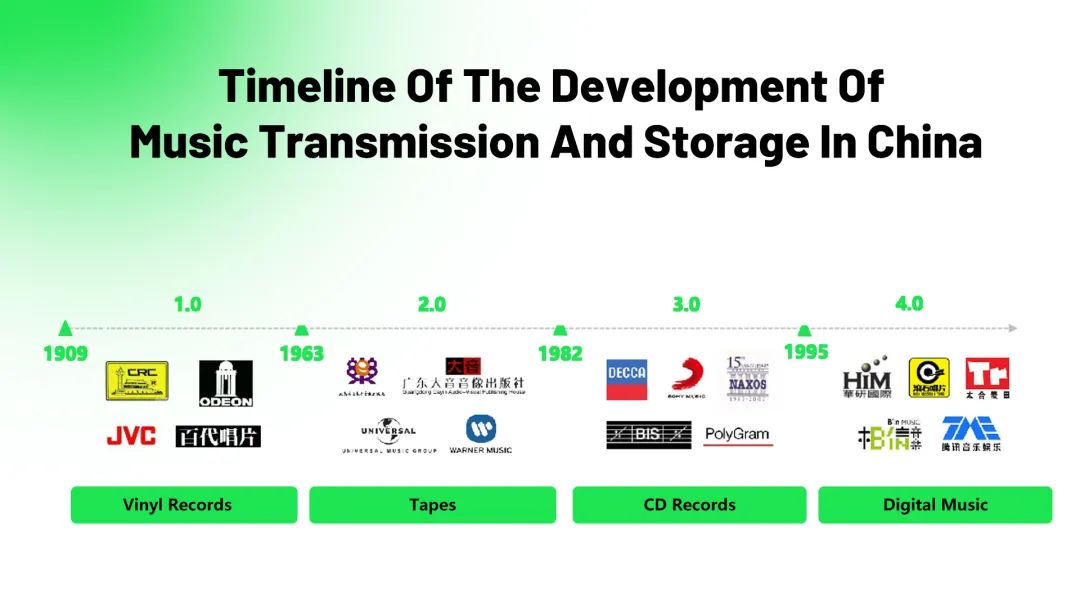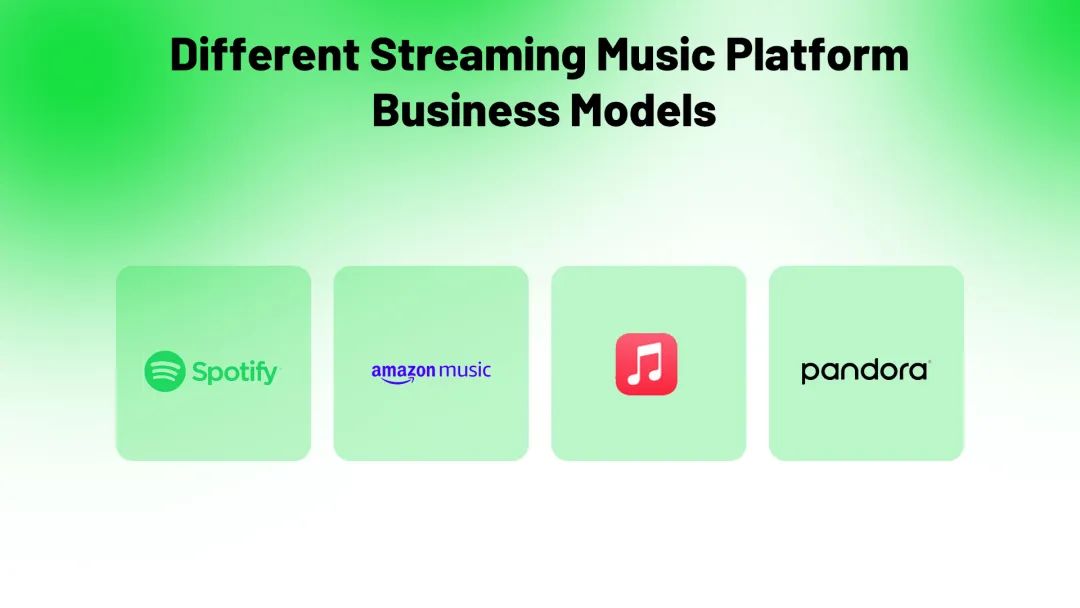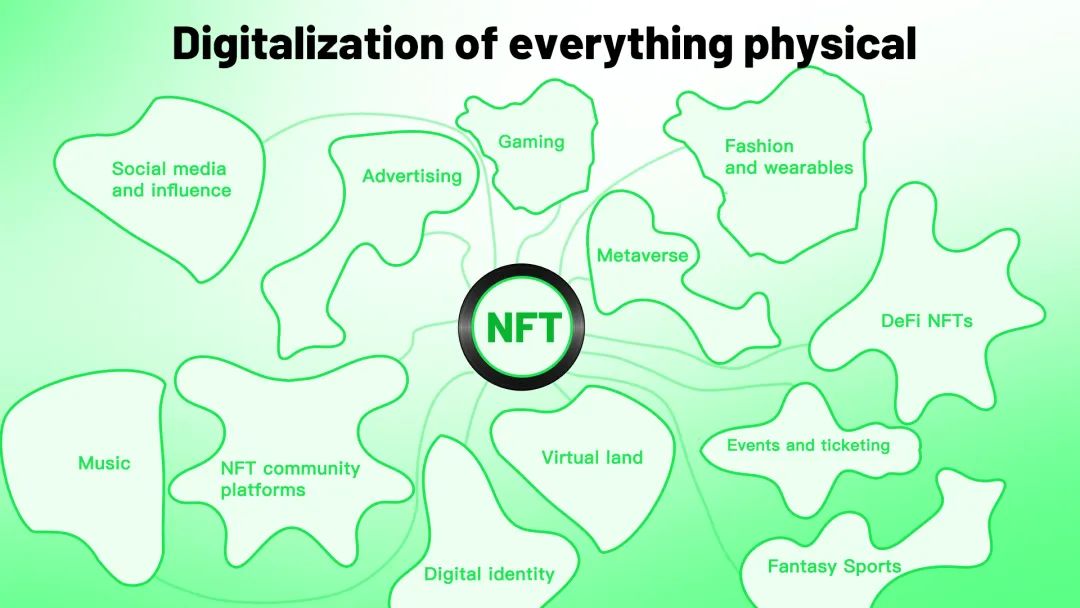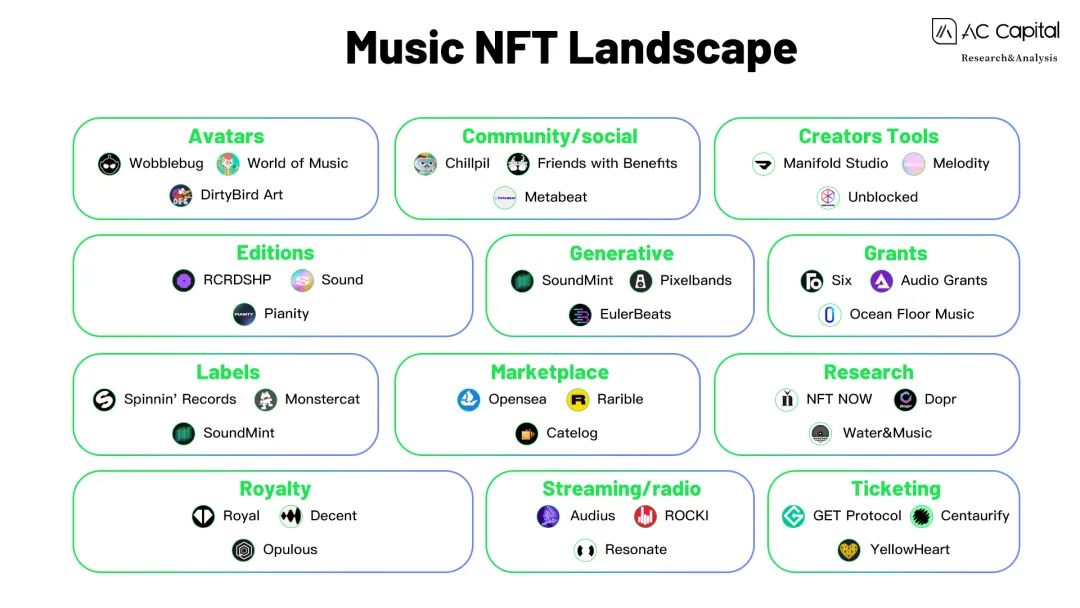Track Insight: New Possibilities Brought by Music NFT

This research report belongs to AC Capital Research's "Track Insights" series. Different from micro projects (Starshark, Stpen), "Track Insights" focuses on the underlying business logic and development trends, challenges, constraints, and opportunities of meso-scale tracks and trends.
foreword
Table of contents
foreword
1. The Dilemma: Red and Black in the Streaming Media Era
Music Industry Evolution
Reshaping the music industry chain
Analysis of Music Streaming Media Business Model
Music Streaming Imbalance
musician's dilemma
2. Changing Situation: New Era, New Technology, New Experience
A New Era: A New Era for Community-Owned Ecosystems
New technology: NFT brings a new transformation of digital ownership
New experience: NFT turns music into an investable property
change of musician
3. Full analysis of music NFT
track map
Prospect Analysis
foreword
Four. Conclusion
foreword
Music consumption is the core consumption demand of human beings for a long time, rigidity and wide audience. Every change in the music industry behind it is an epic of the entire industry change. In recent years, the biggest contribution of streaming media to the music industry is the promotion of legalization. The convenient and fast use of streaming media and low subscription costs have successfully killed Music piracy was rampant.
secondary title
1. The Dilemma: Red and Black in the Streaming Media Era
Music Industry Evolution
Piracy won't give them a penny, streaming media is a better choice for artists-Spotify CEO Daniel Ek
The music industry is a business based on "music creation", which combines the production, sale and consumption of various forms of musical products and musical performances. With the advancement of technology, the way people listen to music has been changing from record-CD/tape-MP3-APP, and the music industry is also evolving.
In the era of vinyl records, music content is presented in physical objects. Record companies make money by selling records. Musicians need to mass-produce music for records. Consumers' choice of music mainly focuses on their favorite singers.
The era of tapes and CD records is the era of the most rapid development of music. Although the iconic singers in the music scene have different periods and styles, their popularity has not diminished. That era is worth remembering, but it also has a gray side: piracy is rampant, consumers have no copyright awareness, and the market is more chaotic.
In the digital music era, listening to music online has replaced music downloads, and song lists have replaced download folders. Users no longer need to pay for a certain song. Buying a VIP at a very low price allows them to listen freely, and big data will help you choose The song you want to hear.
According to the "Global Music Report 2022" released by the International Federation of the Phonographic Industry (IFPI), streaming media has now become a key driver and dominant form of global music industry growth, accounting for 65% of global revenue, and overall streaming media revenue growth up 24.3%. The continuous rapid growth of streaming media revenue since 2011 shows that this decade belongs to the era of streaming media. At the same time, since 2014, a large number of emerging music platforms have emerged on the mobile side. change.

Reshaping the music industry chain
Change in the music industry is constant, and I've been through many transformative shifts, from vinyl to tape to CD to the streaming service that supports Spotify, we've never resisted change, we've embraced change, and thus become Get Stronger—Universal Music CEO Lucian Grainge
Taking China's digital music industry as an example, the current Chinese digital music industry is mainly composed of four parts:
China Music Copyright Association and other copyright management institutions;
Content producers composed of record companies and independent musicians;
Content disseminator composed of digital music platforms, etc.;
Content consumers are users.
In this multi-party digital music industry structure, there are two chains of interests:
Copyright chain:In the copyright chain, record companies or independent musicians sell music copyrights to platform operators, film and television dramas, etc., making music works circulate as consumer goods. Music copyright parties mainly include various copyright management agencies and agents; and among music distributors, digital music platforms have become the main force.
Product chain:In the entire music industry chain of the product chain, record companies lead songwriters, singers and other musicians to form a professional music production team or independent musicians to produce music products. Through the streaming media content distribution platform, music products finally become the consumption of users. Music content producers include independent musicians, songwriters, music studios, etc. Music recording parties are mainly record companies.
In fact, the digital music platform is in the middle of the industry chain, and its role in the downstream product chain is gradually diversified. Cooperation in the upstream copyright chain can also enable it to participate in song creation, copyright and distribution. , while the digital streaming media giants are gradually forming a monopoly position in the midstream, including production, publicity, consumption, copyright services, etc.
The traditional music industry takes commodities as the core. From vinyl records, tapes to CDs, selling products is the core of the industry's profit; while streaming music platforms have completely changed the distribution channels and product forms of the music industry. The music industry has changed from the ownership model (products ) into the right to use (service) model, subscription payment and advertising revenue are the main monetization methods. The streaming music platform has brought about the subversion of the music industry chain and the reshaping of the business model.

Analysis of Music Streaming Media Business Model
Streaming media integrates music playback, dissemination and consumption for the first time in history. It has both audio and video. Songs are intelligently recommended to listeners through algorithms. Karaoke, live broadcast, social networking, self-media, etc. are added to it. Streaming media services have become A digital terminal based on music playback and integrated with diversified entertainment forms, streaming media has become the most important position for music dissemination. A lot of capital is pouring into the streaming media market.
Under the catalysis of the epidemic, the world has accelerated into the streaming media era. More and more users listen to music through streaming media, causing the traffic of music streaming media platforms to skyrocket. Since its launch in 2008, Spotify has relied on its rich music library and unique model With the excellent recommendation mechanism, the number of users has grown rapidly, and it has gradually developed into a streaming media giant.
The strong growth of streaming music platforms comes from the joint promotion of user growth and payment rate increase. In the global paid music streaming market, MIDiA Research’s 2021 research report shows that the top four are Spotify, Apple Music, Amazon, and Tencent Music (Tencent Music Entertainment Group, TME). The strong profitability of streaming media is due to the platform's in-depth exploration of the upstream and downstream music industries, and the layout of the "content + traffic" track.
Spotify currently has 422 million monthly active users (MAU) and 182 million paid subscribers. It has gradually developed into a streaming media giant. In addition to Spotify, current streaming music platform owners represent four different streaming music platform service models according to their business models. in:
The free value-added model represented by Spotify provides users with free on-demand video + paid value-added services. Free users have advertisements in their audio, while paid users can enjoy value-added services such as ad-free and offline playback;
The limited freemium model represented by Pandora is more similar to an Internet radio station. Users can listen to music in the playlist for free, but they cannot order music on demand. The number of songs that can be listened to, the frequency of skipping songs, and the frequency of listening to the same singer, etc. are all different. restricted;
The vertical payment model represented by Apple Music, after the three-month trial period, users must pay to use it;
The soft bundled payment model represented by Amazon Prime Music, that is, the music service is an additional content in the Amazon Prime membership service.

Music Streaming Imbalance
Monopoly is the primary productive force, in order to have enough profit margins—Peter Thiel, the former founder of Paypal
Music copyright monopoly: In the music industry chain, copyright is upstream. Having more copyrights of good music means more listeners and paying income. In 2021, the British Digital Culture, Media and Sports Council DCMS issued "Streaming Media The "Music Economy" report expresses concerns about the market power of streaming media giants, and pointedly pointed out that the copyright licensing negotiations between Universal Music, Sony Music, and Warner Music and streaming services between the world's three major record companies lack transparency. It is at the core of the industry chain and has strong bargaining power. Music copyright giants have their own monopoly on copyright.
Blurred interests in copyright: The core of the creators’ protest is how money is distributed. In the current digital music industry environment, streaming music buys song copyrights from record companies or musicians at one time, and the premium generated by songs on mobile music platforms It is completely cut off from the original copyright owner. In fact, compared with song copyright fees, the returns (or yields) obtained by mobile music platforms through advertising revenue, paid listening, scene marketing, etc. are at a relatively high level. There are endless.
Algorithm dependence, isolation of users: With the help of algorithm technology, the music app has changed from a listening tool that users actively search for or introduced through rankings and media to a platform with powerful music distribution and discovery functions. For musicians, they rely on streaming music platforms Larger, on the streaming media platform, traffic is still tilted towards a few people, and more and more record companies are beginning to pay attention to the social media data of musicians, trying to predict the probability of future success when signing artists. Streaming platforms severely separate users from creators. The core of the traffic war should eventually return to humanities and music itself.
The embarrassment in the middle reaches of the industry chain: the core asset in the music industry is "music content", and it is the upstream copyright holders and record companies such as Universal and Warner who firmly hold the massive music copyrights. Spotify is more of a platform connecting users and artists, while Tencent Music builds a content ecosystem.
Although streaming media giants are infiltrating upstream and downstream, streaming media platforms without core copyright content have no capital to challenge and negotiate prices with copyright parties.
musician's dilemma
Artists only get 12% of the industry's revenue, it's time to free music from the oppressive system, it's time to take control and build our own product - Kanye West, American rapper and music producer
In the case of stagnant performances, the income of musicians during the epidemic is almost entirely dependent on the royalties that streaming media channels can pay. While the income of streaming media platforms has been soaring, musicians are considering quitting the music industry due to poor income. This contrast highlights the industry problem of low royalties.
In China, the "2020 Chinese Musicians Survival Status Report" survey shows that nearly half of non-student musicians have a pre-tax monthly income of less than 2,000 yuan, and a quarter of musicians maintain a pre-tax monthly income of 2,000-4,999 yuan. Only 5.89% of them can reach a monthly income of 80-10,000 yuan, while only 9.3% can reach a monthly income of more than 10,000 yuan.
The Musicians' Union in the UK also stated that due to the arrival of the epidemic, musicians lost 21 million pounds in income in May alone. A few weeks ago, a survey of 2,000 members found that 34 percent were considering quitting the music business altogether.
secondary title
2. Changing Situation: New Era, New Technology, New Experience
On social media platforms such as Twitter, Instagram, and TikTok, the conversion rate can even be as high as 100%, which means that the platform is not even willing to give creators a penny. The platform has taken all the benefits, but the interests of users have been damaged by it—— Chris Dixon, partner of A16Z
The creator economy is a new economic model in the Internet era. Independent content creators (such as bloggers, social media influencers, videographers, etc.) publish their original content and earn income through decentralized platforms or communities.
Web 3.0 will change ownership. Creators want to own and vote on the platforms they create. In this way, when the platform makes money, they can also make money, and the situation is changing subtly.
A New Era: A New Era for Community-Owned Ecosystems
"The creator economy started out with people's desire to control and own their voices, creativity, and ultimately their careers" - Aaron DeBevoise, Founder, Spotter
In the record era, music production, dissemination, consumption and other links have a complete set of processes, and music and artists are regarded as standardized "commodities" to create. That is, large-scale production, large-scale sales and large-scale dissemination, that is, to create mature singers, and there is a general lack of cultivation of new musicians.
After streaming music platforms have gradually become mainstream listening channels, another impact on upstream copyright owners is the gradual rise of independent musicians. From 2012 to 2017, the market share of independent musicians/independent record companies increased from 24% to 32.2%. Not only well-known singers from major record companies are well-known to consumers, but also independent musicians of various music styles can be discovered and loved. Meanwhile, independent musicians accounted for 52% of all winners at the 2021 Grammy Awards. Compared with China, as of the end of 2020, the original works of independent musicians accounted for as high as 45% of the songs played on NetEase Cloud Music. Supporting original musicians has become the common direction of global streaming media.
This "platform-musician" digital music model will bypass the traditional industry chain as the copyright owner of record companies. A new power game is going on in the upstream and downstream of the industry. Record companies are paying more and more attention to channel creation, and streaming media platforms are increasing content layout. Both of them have achieved new development in the mutual penetration of business.
Despite progress in the status of independent musicians, most creators still face the same problems they have faced for years: creators are still not fully compensated for their efforts, making it difficult to earn a steady income while taking more time to please the algorithms rather than their actual creations. This model does not inspire the creation of niche and in-depth content, but viral pan-popular shallow content.
In Web3, as the distribution of power shifts from platforms to creators and their communities, the creator economy is no longer just about providing value to platforms, but a new form of direct relationship between creators and communities. Not only do creators have the opportunity to offer more to their fans (including financial gain), but creators and their communities are ultimately able to participate in the collective value they help create on the platform.
A platform-centric, advertising-driven business model is the key to the success of web2, but the birth of web3 technology empowers creators through: decentralization, community (creators and sponsors) and tokens as Creators build new business models.
New technology: NFT brings a new transformation of digital ownership
NFT will explode in 2021, successfully bringing NFT, which is relatively unfamiliar to the general public, out of the circle. The sales of NFT will soar in 2021, from a transaction volume of only US$40.69 million in 2018 to a transaction volume of more than US$44.2 billion in 2021. , For a while, it was called "everything can be NFT".
The full name of NFT is (non-fungible Token). The Chinese name is non-homogeneous pass, which is also translated as irreplaceable pass. It is a unique digital asset. NFTs can tokenize almost anything, and various media types in particular are achievable goals, the music industry being one of them.

Looking back at the technological iteration of the music industry, in 1877, Edison invented the phonograph, which was the first time in human history that music could be recorded on a carrier. In 1948, the vinyl record player appeared, and in 1979, Sony released the Walkman. With the change of media, the music market has undergone several major changes.
In general, the scale of this industry has undergone several technological iterations such as vinyl records, tapes, CDs, and digital music (streaming media). The latest music NFT technology evolution has given the music industry more possibilities, from ownership to copyright, from player collection to player investment, from entity to finance, the music industry + NFT has created a new way for digital ownership.
New experience: NFT turns music into an investable property
Web2 makes music a one-off consumption, it separates the song from the artist, and the value from the music. Web3, if done right, can fix both of these ills - Dopr founder abelow
The upgrading of technology has further promoted the new experience of the music industry. In the virtual era represented by digital collections, NFT makes music an investable property. Music NFT community Water & Music has tracked nearly $70 million worth of these music NFTs in the past 12 months, and independent musicians account for 65% of all mainstream music NFT sales, completely subverting record market share dominated by record labels .
For the music industry, NFTs provide a new medium for artists and creators to showcase their work, market their work on the blockchain through the NFT marketplace, and engage their fanbase. NFT makes digital assets scarce, allowing creators to set prices for creations and circulate them in the secondary market.
For musicians, NFTs offer opportunities for independent musicians to engage with audiences and build communities in more groundbreaking ways, while giving them full autonomy over their work. Independent musicians can sell NFT use cases in the form of DEMO, singles, and performance tickets. Music NFT issued on the blockchain can better help independent musicians solve a series of problems such as royalty tracking, fake tickets, and scalped tickets. , while providing a more direct, safe and reliable link for musicians to build communities.
For fans, compared to traditional music consumption forms, music NFTs have formed a new digital consumption form from the perspective of "enjoying benefits, having the right to adapt and resell" regardless of the collection value. , turning music into an investable asset.
change of musician
I’ve made more money with NFTs than I’ve made in 10 years in the music industry — Steve Aoki, American DJ and Music Producer
According to data from Tencent Music Data Research Institute, the global NFT (Non-Fungible Token) transaction volume in 2021 will be about 25 billion US dollars, of which the market share of music transactions is less than 1%, which is estimated to be about 80 million US dollars.
The world's three major music giants (Sony, Warner, Universal)" have reached cooperation agreements with various NFT platforms. Head music platforms Spotfiy and Tencent Music have also begun to explore the possibility of music NFT. Spotify is testing new features to allow music People can display their music NFT works, and Spotify also provides a "See More" option, allowing users to go to OpenSea to buy directly.
Snoop Dogg and 3Lau in the United States, Luo Dayou and Hu Yanbin in China have tried the new form of music NFT. Music NFT links independent musicians and communities (composed of fans) in a revolutionary technical way. From 3LAU’s Ultraviolet NFT breaking an industry record with $11.7 million sold, to CryptoPunk holder rapper Spottie WIFI guiding the community to help him sell an album for $200,000 in seconds.
In the new world, NFT usage scenarios are flourishing. Some musicians release new songs and new albums in the form of NFT, some musicians sell exclusive songs and demos in the form of NFT, some musicians create NFT commemorative tickets, and some musicians share memories of performances. Created an NFT badge.
secondary title
3. Track: Full Analysis of Music NFT
Web3 breathes new life into the innovative and experimental spirit of the music industry and community — Cherie Hu, co-founder, Water & Music
NFTs may be the most significant innovation the music industry has seen since the introduction of streaming. However, music NFT should definitely not be regarded as a panacea. It does not solve all the problems faced by creators, and it should never be underestimated, bringing a new monetization model.
New technologies are breaking barriers to entry into some industries. Music NFT is reshaping the distribution model of the music industry. At the same time, the new attributes of music NFT music, which are programmable, traceable, combinable, and tradable, are opening up new service categories and new scenarios that do not yet exist. , to stimulate product and service innovation on a broader level, and to improve the future possibilities of the entire music industry.
track map
If the streaming media era is a feast for top musicians, and only songs with high playback volume can bring enough income to musicians, then music NFT under the new era, new technology, and new experience will bring potential musicians in the central region It has opened up new opportunities and helped more musicians get rid of traffic competition.
Therefore, in terms of music NFT use cases, the entire music NFT ecology can be divided into 12 major categories of use cases in terms of functional attributes: the following are representative projects
Avatars :Wobblebug、World of Music、DirtyBird Art
Community/social:Friends with Benefits、Chillpil、Metabeat
Creators Tools:Manifold Studio、Melodity、Unblocked
Editions:RCRDSHP、 Sound、Pianity
Generative:SoundMint、 Pixelbands、 EulerBeats
Grants :Ocean Floor Music、Six、Audio Grants
Labels:Spinnin' Records、Monstercat、SoundMint
Marketplace: Opensea、Rarible 、Catelog
Research : NFT NOW、Water&Music、Dopr
Royalty:Royal、Decent、Opulous
Streaming/radio:Audius、ROCKI、Resonate
Ticketing:GET Protocol、Centaurify、 YellowHeart
Music NFT products, utilities, markets and other infrastructure are booming. Various projects are focusing on the redistribution of music industry cakes, returning the value of music to creators and users. A more transparent music NFT ecology is emerging.

Prospect Analysis
We are currently in a new period of digital renaissance, especially around how music fits into this ever-growing Web3 ecosystem. When Coindesk looks forward to the development of music NFT in 2022, it believes that 2022 may be a key year for music NFT.
Changes in business models:The success of musicians is inseparable from the support of fans. It is the strong consumption power of fans that promotes the growth of artists and brings fans into the community. How does music NFT play an advanced business model of fans sharing revenue and continue to attract more users to accept music? The form of NFT.
Change of Ownership:The consumption of music NFT not only obtains the right to listen to songs, but also brings about a transformation of scarce digital ownership. At present, music NFT has brought all-round changes to personal use rights, NFT transfer rights, royalty income rights, and commercial use rights.
Creator revenue shift:Why get paid once when you can get paid forever? Through NFT creators can set the creator share and obtain commissions for subsequent secondary sales. The copyright in the Web2 era is sold to a company, and the copyright in the Web3 era is sold directly to users (collectors).
market challenge
NFT tokenizes valuable things (it can be a painting, a song, or a video, etc.) to form a digital asset, and the ownership of the digital asset can be traced in real time. However, the laws of various countries are still inconclusive about NFT. The following market challenges exist:
Price fluctuations:The hot secondary market, the endless new projects and new ways of playing, the ups and downs of the market, and the price roller coaster.
Lack of financial regulation and accountability mechanisms: NFT may only be a digital project, but when NFT involves copyright transfer, it directly collides with the legal boundaries of the physical world. Regulators will adopt or adapt laws to address new forms of ownership under physical world policy
hacker attack:Decentralized music platform Audius has been hacked, losing $6 million worth of AUDIO tokens.
New piracy and infringement issues: HitPiece, the music NFT market, has been slammed for selling music assets without the artist's permission. There is still a gap between the NFT copyright ecosystem and the complex global music copyright ecosystem.
Niche Market:Buyers of music NFT works tend to come from "niche market, ultra-wealthy crypto communities who are already familiar with how crypto technology works and have enough cryptocurrency, not the wider music listening user.
Four. Conclusion
Four. Conclusion
As Jobs said: Music is eternal, and it will always be there.
Looking at the development of the music NFT market, although many musicians sell music in the form of NFT, this does not mean that NFT music has penetrated into the hearts of ordinary consumers. Under the integration of music and technology, new platforms and media have emerged rapidly, reshaping How users and musicians connect.
In the new era, with new technology and new experience, music NFT has the potential to truly implement the "long tail theory" - 1,000 fans can support an artist, and the artist's career growth can also feed back the community of fans and bring investment to the community income.
refer to
refer to
http://pdf.dfcfw.com/pdf/H3_AP202010161421720481_1.pdf
https://pdf.dfcfw.com/pdf/H3_AP202201051538629756_1.pdf?1641455080000.pdf
https://pdf.dfcfw.com/pdf/H3_AP202107151503992585_1.pdf?1626378469000.pdf
https://ifpicr.cz/global-music-report-2022
https://newsletter.banklesshq.com/p/how-to-get-started-with-music-nfts
https://www.iimedia.cn/c400/72305.html
https://app.dopr.xyz/nft-directory
https://twitter.com/AbelowRob/status/1508798814576123907
https://winformusic.org/wintrends-new-market-research-report/
https://www.pingwest.com/a/180839
https://www.savethemusic.org/blog/what-is-nft-in-music/
https://nftnow.com/music/top-music-nft-moments/
https://nftnow.com/features/nfts-music-business-collectibles-communities/
https://nftnow.com/features/nfts-music-business-collectibles-communities/
https://www.waterandmusic.com/defining-music-nft-ownership-from-the-digital-to-the-analog-world/
https://www.waterandmusic.com/after-the-drop-secondary-nft-sales-analysis/
https://www.coindesk.com/learn/what-are-music-nfts/
https://thedefiant.io/building-the-investable-layer-of-music-by-3lau/?utm_source=rss&utm_medium=rss&utm_campaign=building-the-investable-layer-of-music-by-3lau
https://www.musiclinkup.com/pulse/4638/understanding-the-music-industry:-music-publishers,-syncs-and-licensing
https://www.nytimes.com/2021/02/22/business/nft-nba-top-shot-crypto.html
https://techcrunch.com/2022/05/16/spotify-new-feature-artists-promote-nfts/
https://nasacademy.com/blog/article/spottie-wifi-creator-story
https://ra.co/news/75341
https://mirror.xyz/camoufly.eth/lKVKUj9uo7cdVNRB9fQJlNGbWVCC6CV6IswDcXnte-8
https://coopahtroopa.mirror.xyz/8OrpDmu5wboGX36-vXIt3gBMQMoihY0k_kV4XowlMMo
https://docs.google.com/presentation/d/1ICEKTmNaHFBLPCPatRJJR7HclTVGpUGPMbkpmgv1O5Y/edit#slide=id.gd2f207c450_0_81
https://www.reviews.com/entertainment/streaming/music-streaming-royalties/ https://pitchfork.com/thepitch/why-do-nfts-matter-for-music/ https://pitchfork.com/features/article/how-nfts-are-shaping-the-way-music-sounds/
https://pitchfork.com/thepitch/why-do-nfts-matter-for-music/
https://www.musicpressasia.com/2022/04/28/where-music-should-be-in-the-metaverse/



